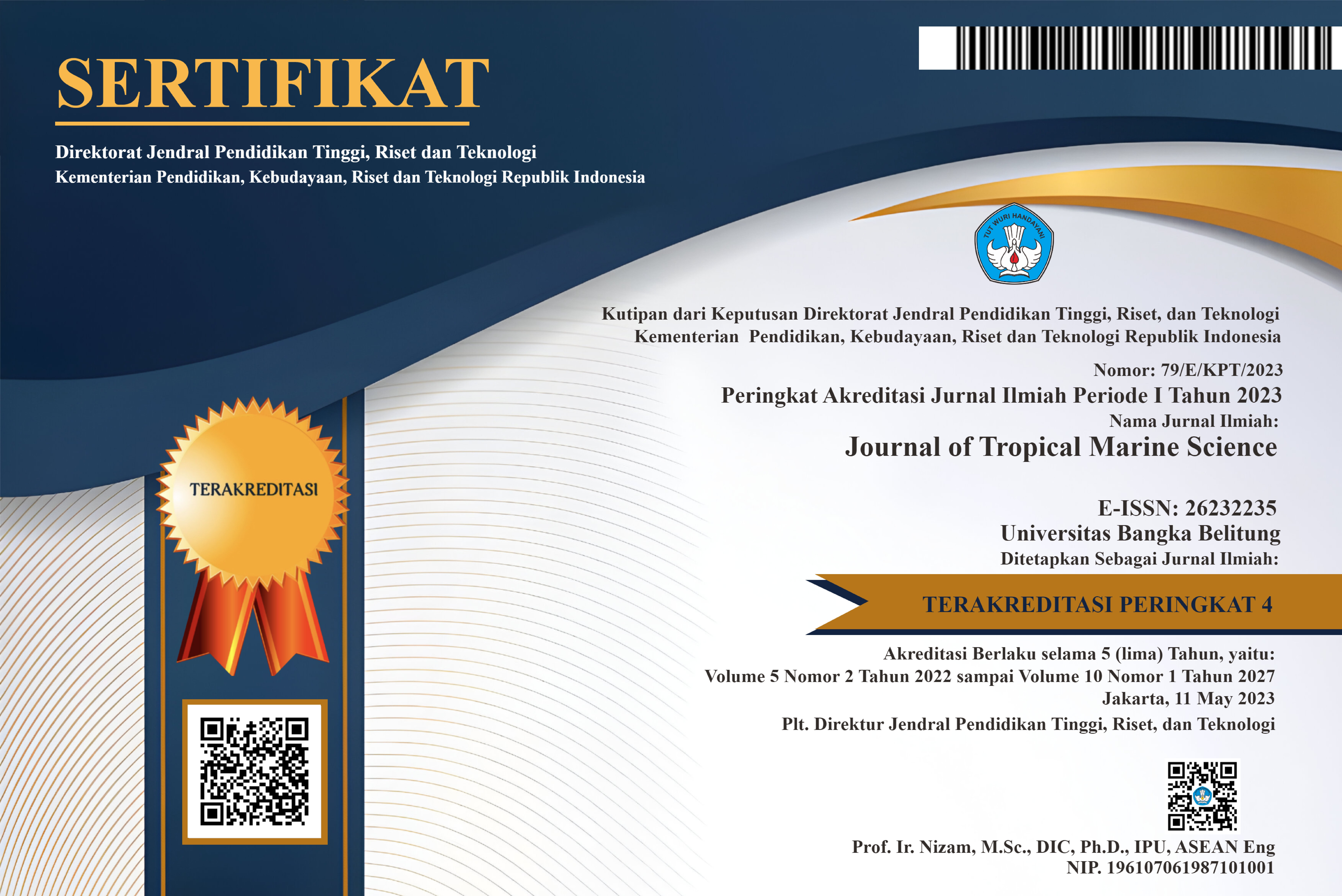Kondisi Padang Lamun di Pulau Panjang dan Pulau Lima, Banten
Abstract
Seagrass are one of the marine ecosystems that have an important ecological function in maintaining biodiversity. The ecosystems that exist in shallow sea waters, seagrass meadows in Indonesia are not widely known and even almost ignored, but this ecosystem has various important functions in marine ecosystem. The health status of the seagrass ecosystem can be determined based on the percent cover (%). Seagrass have several environmental factors that influence such as temperature, salinity, pH, current velocity, depth and sediment composition. This study aims to identify and monitor seagrass percent cover and the factors that influence it in Pulau Panjang and Pulau Lima, Banten. This research was conducted in October 2019 using descriptive methods and purposive sampling in determining the location. Seagrass identification and data collection refers to the LIPI method. There were 2 types of seagrass found, namely Enhalus acoroides and Thalassia hemprichii with a percent cover on Pulau Panjang (11.55-12.5%) and Pulau Lima (14.21-15.34%). Other environmental factors that are outside the optimal value for seagrass growth, namely the value of temperature and sea current and the discovery of the type of sediment composition, namely sand and silty sand.














